Teaching wasn’t always Deserita Napier’s first choice. In fact, when she started her freshman year at Virginia Commonwealth University, her goal was to become a pediatrician. However, after taking a few education courses, Napier knew she wanted to be a teacher.
“I felt like teaching was my purpose, and I switched majors to mathematics education.” When Napier graduated in 2011, she was ready to make a positive impact on her students. “I started out teaching in a very rural area – Middlesex County – and then moved to Richmond City and have been teaching high school math at James River High School in Chesterfield for the last six years,” says Napier.
Diverse Experiences Enhance Education
Moving from Elkhardt-Thompson Middle School in Richmond to James River High School in Chesterfield County was a bit of culture shock for Napier, who is Black. “I went from being with a large number of Black teachers in the city to being with only a handful at my new school,” says Napier.
Napier says she sometimes felt intimidated as a teacher of color in front of a large number of white students, many who came from upper-class families. “It was intimidating at first, but then I started building relationships with them [students], and I became more comfortable as well.” These relationships proved beneficial to both Napier and her students. “I have always liked being able to reach new kids every year, but I wanted to also teach them something beyond just math,” says Napier. “We come from different backgrounds, so let’s put the math books away and get to know each other, too.”
According to Napier, opening up and letting her students know more about her own life helped her develop relationships with all of her students. “After instruction, I think it’s good for me to expose my different cultural perspectives, share my experiences growing up in Chesterfield, and how things have changed. We also talk about common things we might share, such as going to choir practice. Some of my students may not have had many Black adult interactions before, so I want to make sure I build those relationships.”
How Black Teachers Make a Difference
Reaching out to Black students at the school beyond her classroom was particularly important to Napier. “I think it is my duty … to also reach out to students of color who I can touch or mentor. I understand, in many cases, where they might be coming from. I was a Black student at a predominately white school as well in Chesterfield County… sitting in a math class where sometimes I didn’t get called on when I should have,” says Napier, recounting one of her experiences as a Black student.
Napier also makes sure she reaches out to incoming new students who may be transferring to the school in the suburbs from the city. “When they come over to James River, they may already have a reputation and they are coming into a culture shock. On top of being that person to guide them through that transition, some of them [Black students] might not have had positive white role models or interactions,” says Napier, adding that for some students, having a connection with a Black teacher at a new school can impact outcomes right away. “Talking through their emotions and being someone they can talk to can decrease the amount of [school] suspensions within the Black demographic,” says Napier.
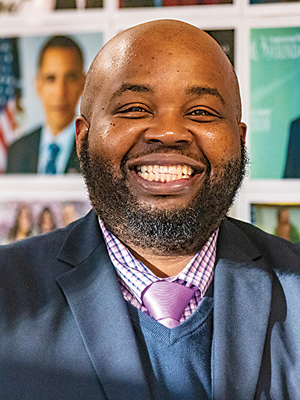
Rodney Robinson, the 2019 National Teacher of the Year and former Richmond Public Schools teacher, also believes in the importance of having more Black teachers in front of Black students. “They are their role models – someone who looks like them and sees the world and the demands of being Black,” Robinson says about Black teachers and students. “They [teachers] are able to relate to students and understand what it means to come of age as a young Black person and provide that empathy on another level.”
Robinson notes studies that cite when Black students have Black teachers, academic achievement can soar. “We know that Black teachers are more likely than non-Black teachers to believe that Black students will do well [academically].”
Robinson believes all students can benefit from being taught by teachers of color. “Having a Black teacher in front of you takes away negative stereotypes. It’s not what the media says or what someone’s parents might say. Black students need Black teachers and white students need Black teachers. It just makes everything better,” says Robinson.
Lasting Impact for Students
Robinson benefited greatly from the four Black teachers he had growing up in King William County. “They all had high expectations, pushed me to be better, and they didn’t let me slack ever. Quite frankly, I didn’t have that with my other teachers.” Rodney’s greatest influence was the one Black male teacher he had in both middle and high school, his band teacher Calvin Sorrel. “Mr. Sorrel challenged me and never let me off the hook ever.”
Robinson now serves as a senior advisor for Richmond Public Schools. In this role, Robinson helps support Black men and other teachers of color. He also seeks to encourage more Black college students to explore the teaching profession. “Our schools were not built for Black children in America. We must create better experiences for them in school. School should be a place of joy and laughter. It shouldn’t always be discouragement and stress. Who wants to go back to your scene of trauma?” says, Robinson, considering the likelihood of Black men and women returning to the classroom as teachers later in life. “I believe more Black people would go into education if we start off with creating better school experiences for Black children.”
Robinson believes high expectations for our Black students will also help close the gap on the number of Black educators in Virginia and nationwide. “Stop with the labels, stop throwing kids in special education too soon. Provide them with other types of help,” says Robinson.
Recruiting Teachers of Color
Other Richmond-area school divisions have also realized the importance of recruiting teachers of color. Shawn Smith serves as chief communications and community engagement officer for Chesterfield County Public Schools. Smith explains how CCPS is working to build a more diverse workforce. “Chesterfield County is now labeled as a major minority school division with more than half of the student population identifying as other than white,” says Smith.
To help build a teacher population that mirrors what their students look like, CCPS has launched the “Mirror Me” initiative to “elevate high school and college students of color who are interested in pursuing teaching careers,” says Smith.
He adds that students who are chosen for the program will receive a number of incentives, including mentoring programs, financial incentives, and a guaranteed teaching job in Chesterfield County after college graduation.
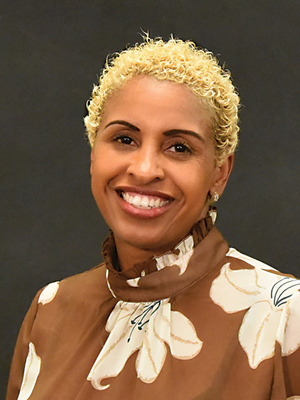
Monica Manns, EdD, is the chief equity, diversity, and opportunity officer for Henrico County Public Schools. In that role, she has helped initiate programs to both retain and recruit teachers of color in Henrico County public schools.
“When I started my work, we had sessions around the division centered around equity. An issue that kept coming up was addressing the recruiting and retention of teachers of color. It was primarily focused on Black teachers, but it has grown to include all teachers of color, including Hispanic and Asian teachers,” says Dr. Manns.
Dr. Manns was pleasantly surprised to note that it wasn’t coming just from the teachers themselves, but the community as a whole. “Parents, students, and teachers were all asking, and they were very vocal with their concerns,” says Dr. Manns, adding that students in particular wanted to know why they didn’t have teachers who looked like them. “We have equity ambassadors at each high school. These are groups I work with to give students an opportunity to be heard. These student conversations led to questions about why our teaching force wasn’t as diverse as our student body,” says Dr. Manns.
Dr. Manns seeks to address this issue from three different levels: state, division, and school. “At the state level, I said let me talk to state representatives. Let me give you the examples of the people who have left the profession because you are not willing to put the dollars behind it,” says Dr. Manns. “I will speak with any Democrat or Republican – anyone who is making decisions and pronouncements and introducing legislation and not realizing that what you are doing is what is making it harder.”
Examining the reasons why more people of color don’t seek out the education field is also important to Dr. Manns. “Black students may sometimes be first-generation college students. They are collecting student loan debt and often don’t want to come out of college making $45,000 when they owe $40,000 in student loans. It’s very discouraging,” says Dr. Manns. “Many Asian families don’t see teaching as a profession that will be financially viable either, in terms of supporting a family.”
Addressing it at the division level requires a thorough look at current recruiting practices. “We are all fighting from a very limited pool, and we needed to really diversify where we are going to look for candidates. Everyone is competing,” says Dr. Manns. “Going to more historically Black colleges and universities was a given, but also being more creative and open to going to other spaces. Start having recruiters go to diverse community festivals such as in the Asian or Hispanic community,” says Dr. Manns, adding that today’s leaders in education have to be more innovative in marketing education as a career path for young people.
Finally, at the school level, Dr. Manns says principals should be encouraged to explore new tacts during hiring. “We are trying to get principals to look at resumes a little differently and more holistically. For example, if you know you have a significant population of a particular group [and the candidate is a member of that group], you should think about that individual’s resume and the activities they have been involved in. Even if that person does not have some of the typical strengths you are looking for, at least give the person an opportunity to interview, because you don’t know if they are going to bring something different to the table,” Dr. Manns says.
The administrator encourages principals to ask specific questions about their own school and its population: “What is it that we need to bring to this school? Do our kids feel like they belong here? Do they see themselves when they arrive at our doorstep? Do they feel comfortable here?”
Working and Growing Together
Dr. Manns also works hard to ensure teachers of color have a solid voice in what is happening in Henrico County Public Schools through several newly created teacher groups. “We have a diversity group which anyone can join. This is a group for anyone who wants to work on issues regarding diversity in our division.”
One of the other groups, the Black Educator Collective, works on issues and concerns which come up frequently with Black educators. “They have some significant and real frustrations, including issues centered around teacher retention and why Black educators leave the teaching field. Many times, they are not typically seen as academic experts in their buildings,” says Dr. Manns, noting that many Black teachers are automatically typed as disciplinarians first, who are “good with more challenging students.”
There are other groups that are inclusive and open to anyone and everyone who is interested in joining. The groups meet monthly and spend time together at different social events including trips to The Valentine and VMFA. “Our Asian and Hispanic Alliance group helps teachers come together where they can be seen. In some cases, these teachers are the only Asian or Hispanic teacher in their building, and they are not even looked at as a person of color. This group gives these teachers a voice and a feeling of belonging.”
Robinson hopes to create safe spaces and experiences for teachers in Richmond Public Schools and beyond his city as well. “I want to create experiences for our educators where they can learn from each other, not feel disrespected, and feel safe from any micro aggressions. They can form their own communities where they can talk and grow,” says Robinson.
Teaching in Chesterfield County, Napier strives for more of a collective effort at her own school. “I want teachers of color to come together and be more of a voice,” says Napier. She adds that this creation of community among teachers of color might help keep those educators in the field for the long term.
Classrooms of the Future
Measures that can help recruit young people of color, and especially young Black men and women, to the field of education will be a win-win for families. All students and school divisions can benefit from a more diverse workforce. Minority teachers are able to help form critical relationships with students which may even help deconstruct racism and discrimination in the long run. “As our schools become more diverse, having different teachers helps students form positive perspectives that they may not have had before.” says Napier. “We really need to keep pushing for more diversity and encouraging interactions every single day.”
We asked local educators why it’s important for students to have teachers of color and here’s what they had to say…
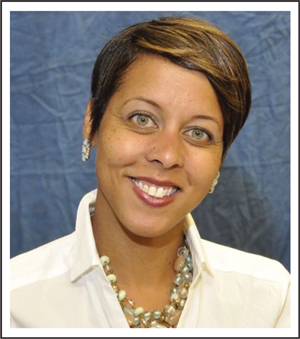
“A teacher of color in the classroom often serves as a catalyst for change in the way students, their parents, and ultimately, the community as a whole view our increasingly diverse world.”
Crystal Richardson, Chesterfield County Public Schools, 3rd grade
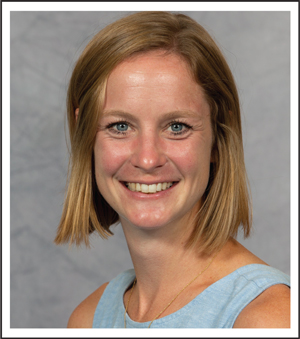
“Having teachers of color in our classrooms plays a vital role in helping students to identify, activate, and grow the tools they need to fully engage with and appreciate the diversity of the world around them. We want our students to be ready and excited to live life to its fullest outside our classrooms and experience a vibrant, rewarding journey after they graduate. The opportunity to be taught by teachers of color creates a robust foundation of understanding, empathy, and rigor that will help secure that goal.”
Elizabeth Simpson, The Steward School, Upper School academic dean
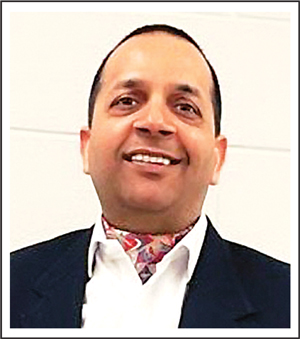
“Students need teachers of color, as they find it easy to connect with them and have the feeling of belonging in the classroom.”
Sanjay Chaudhary, Petersburg City Public Schools, high school math/varsity soccer coach
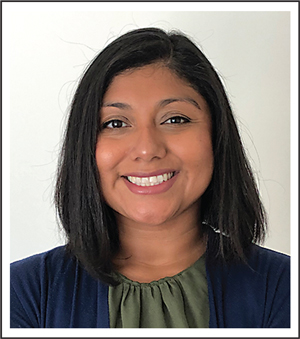
“From a young age, children receive messages about who belongs in certain spaces based on what they see around them. It’s important that teachers of color make up the patterns they witness as it affirms that folks who look like them are highly valued members of a community.”
Alma Kenup, Henrico County Public Schools, middle school English

“For our students of color, research shows that instruction by a teacher of color positively impacts academic performance and graduation rates; there is dignity in representation. On a larger scale, writer Melinda D. Anderson argues that teachers of color can have a significant impact on the disruption of institutional racism. If our diverse society is to reach its potential, a diverse faculty would help ensure that all students leave school able to recognize, understand, and celebrate cultures other than their own.”
Shannon Elsea, The Steward School, middle school English
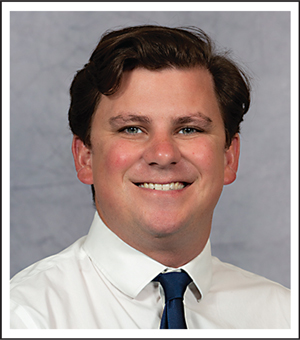
“As we encounter challenging themes in the classroom, teachers of color can convey their personal experiences with racism in a way that I, as a white male teacher, cannot. In the plays we watch and the novels we read, too often, characters and authors of color are silenced in favor of their white counterparts, even when dealing with issues of racism. Having teachers of color in the classroom sheds an honest and essential light on the experiences of our students of color.”
Peter Hurley, The Steward School, Upper School English

“The significance of BIPOC teachers is that we are often, but not necessarily always, very attuned to the struggles
of students who are like us. To cite author and professor bell hooks, we view education as a practice of freedom and teach with that view in mind.”
Dennis Williams, Richmond Public Schools, special education and high school math
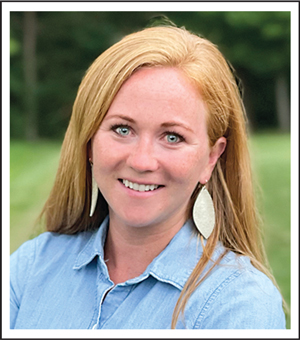
“Having a diverse staff allows students to see themselves and make connections with teachers that look like them, especially boys with male teachers of color. All students benefit from being exposed to various perspectives and experiences.”
Jessica Harrington, Chesterfield County, kindergarten

“Being a teacher of color allows me to use a holistic approach to teaching; operating with compassion and empathy regarding the unique experiences and challenges for students of color.”
Michael Jokodola, Petersburg City, Public Schools, 8th grade science
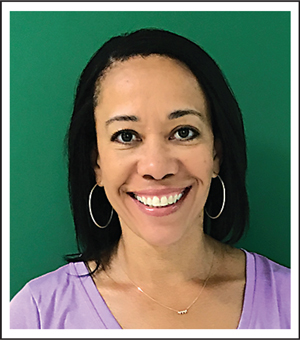
“Teachers of color bring a unique perspective regarding the importance of education to their students simply because we live the fact that “education is the great equalizer.” Additionally, when students experience people of color as their teachers, they view us as good helpers and impactful authority figures who they can respect and appreciate within their community.”
LeYuani Wilson, Henrico County Public Schools, 2nd grade




